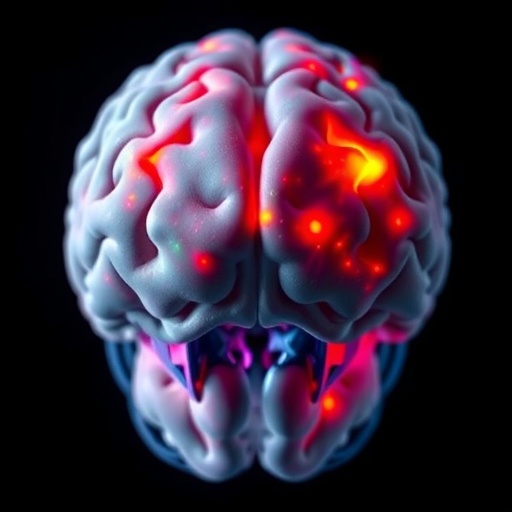In a groundbreaking study recently published in Biochem Genet, researchers have turned their attention to glioblastoma, one of the deadliest forms of brain cancer. The collaborative effort led by D. Seven, A. Ekici, S. Uebe, and their team delves deep into the molecular intricacies of glioblastoma by exploring differentially expressed genes associated with this aggressive malignancy. Their insights not only enhance our understanding of glioblastoma but also pave the way toward innovative therapeutic strategies, potentially altering the trajectory of treatment for patients afflicted by this challenging disease.
Glioblastoma, classified as a grade IV glioma, poses significant clinical challenges due to its highly infiltrative nature, resistance to conventional therapies, and poor overall prognosis. Despite advancements in surgical techniques, radiation, and chemotherapy, the five-year survival rate remains dismally low. Consequently, the quest for novel biomarkers and therapeutic targets has become a focal point in cancer research. The compelling findings from this study aim to provide substantial contributions to this ongoing battle.
By deploying cutting-edge genomic technologies, the researchers meticulously analyzed tumor samples collected from glioblastoma patients. This comprehensive examination allowed them to identify genes that exhibited differential expression patterns in tumor versus normal brain tissue. These genes include crucial regulators of cellular processes such as proliferation, apoptosis, and metabolic pathways. Understanding these genes’ intricate roles offers a valuable window into the molecular landscape that defines glioblastoma, illuminating how these cancers develop, progress, and resist treatment.
Among the differentially expressed genes highlighted in this study, certain genes play well-known roles in oncogenesis, while others present novel associations with glioblastoma. The research team carefully examined the expression levels of these genes through advanced technologies such as RNA sequencing and various bioinformatics tools. Important pathways linked to cell cycle regulation and cellular respiration were found to be significantly altered, suggesting that glioblastoma cells may employ unique metabolic strategies to sustain rapid growth and evade cellular death.
Furthermore, the findings unveil the expression of several genes previously unrecognized in glioblastoma, indicating that our comprehension of this malignancy remains incomplete. The alterations in these gene expressions are not merely academic; they have profound implications for developing targeted therapies and diagnostic tools. For instance, therapeutic strategies that leverage the inhibition of overly active pathways may offer a dual approach, targeting both cellular proliferation and the metabolic rewiring characteristic of glioblastoma cells.
In addition to traditional experimental techniques, the researchers utilized advanced machine learning algorithms to correlate gene expression with clinical outcomes. This innovative approach serves a dual purpose; it provides a powerful framework for predicting patient responses to treatment and identifies potential patients for clinical trials based on biometric data. The integration of machine learning in cancer genomics signifies a remarkable shift towards personalized medicine, where therapy can be tailored to individual patients based on their unique molecular profiles.
Future directions stemming from this research could significantly impact clinical practices. The study advocates for the exploration of combination therapies that target multiple pathways activated in glioblastoma. Researchers speculate that simultaneously inhibiting key signaling networks, along with traditional treatments, could result in a synergistic effect, ultimately leading to improved patient outcomes. These insights may inspire a new frontier of clinical trials aimed at assessing the efficacy of such combination therapies.
In conclusion, the exploration of differentially expressed genes and the mechanisms underpinning glioblastoma provides crucial insights into the disease’s molecular characteristics. By identifying biomarkers that could facilitate earlier diagnosis and therapies that could improve patient survival, this research furthers our understanding of a complex malignancy and shines a light on the path ahead. As glioblastoma remains one of the most formidable enemies in oncology, continued research in this field is paramount, holding the promise of transforming how we approach, understand, and treat this life-altering disease.
As scientists and clinicians collaborate to further investigate the results of this study, we can anticipate breakthroughs that may one day lead to improved prognoses for patients facing glioblastoma. The journey toward conquering this relentless cancer is ongoing, and with such exciting advancements in genetic exploration, hope for improved therapies is palpable. Ultimately, this research epitomizes the power of modern science to unearth the hidden complexities of cancer and to chart a course toward innovative therapeutic avenues that could save countless lives in the future.
Subject of Research: Glioblastoma and differentially expressed genes.
Article Title: Exploring Differentially Expressed Genes and Understanding the Underlying Mechanisms in Glioblastoma.
Article References:
Seven, D., Ekici, A., Uebe, S. et al. Exploring Differentially Expressed Genes and Understanding the Underlying Mechanisms in Glioblastoma. Biochem Genet (2025). https://doi.org/10.1007/s10528-025-11241-w
Image Credits: AI Generated
DOI: 10.1007/s10528-025-11241-w
Keywords: glioblastoma, differentially expressed genes, molecular mechanisms, cancer research, targeted therapies, personalized medicine, oncogenesis, machine learning, combination therapies.




